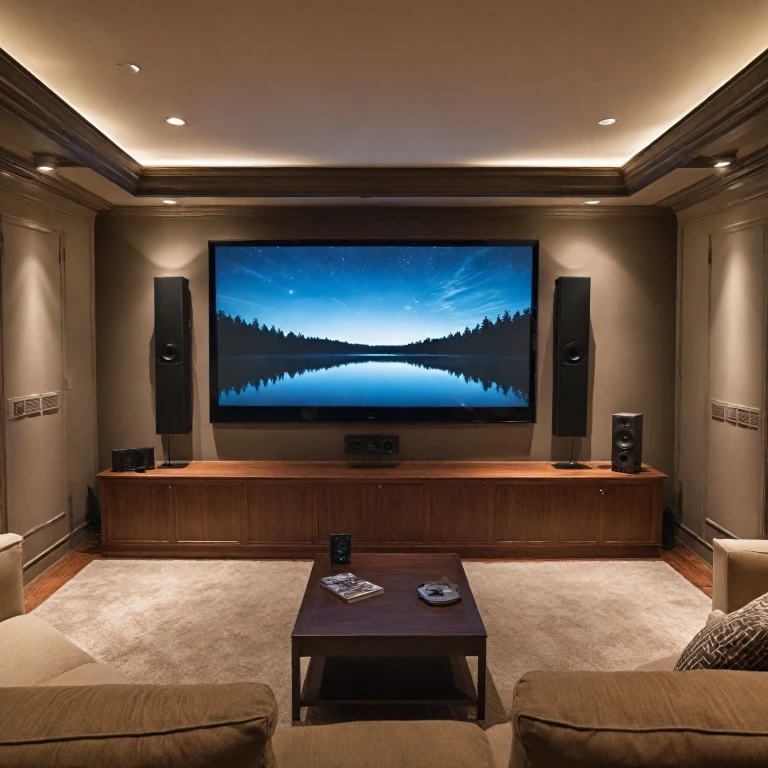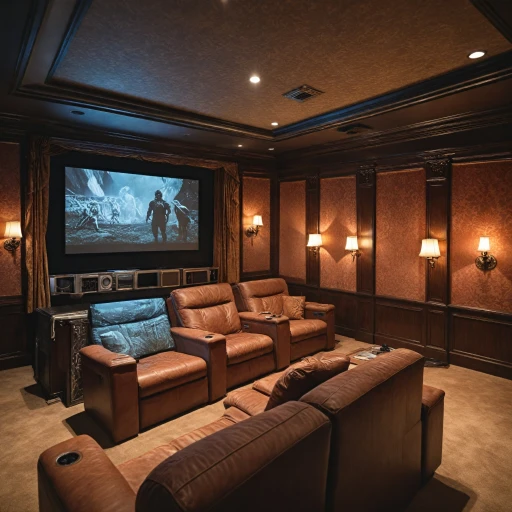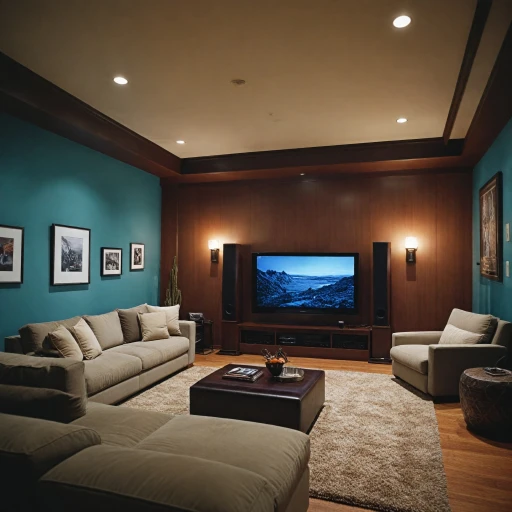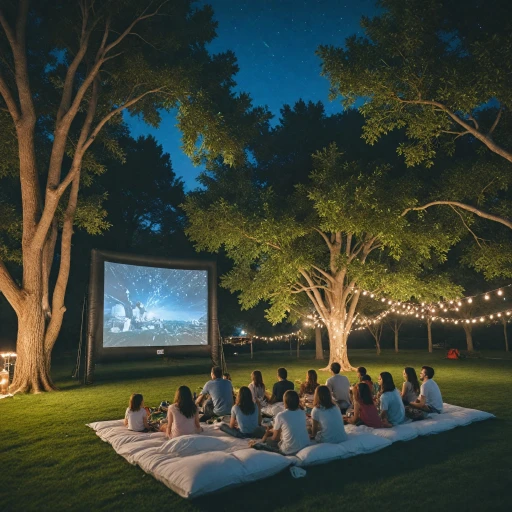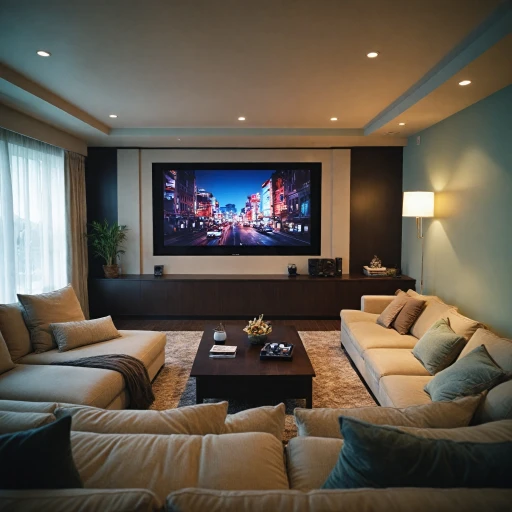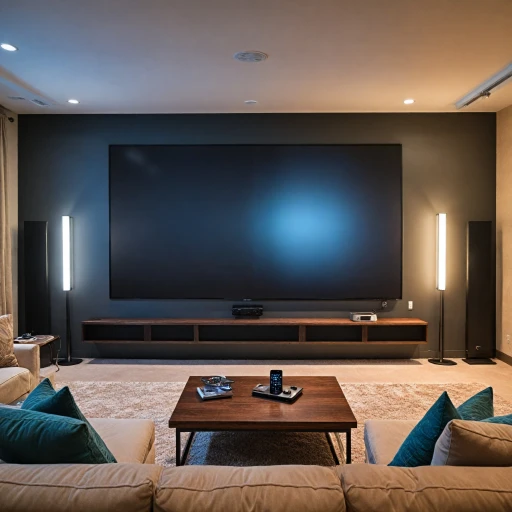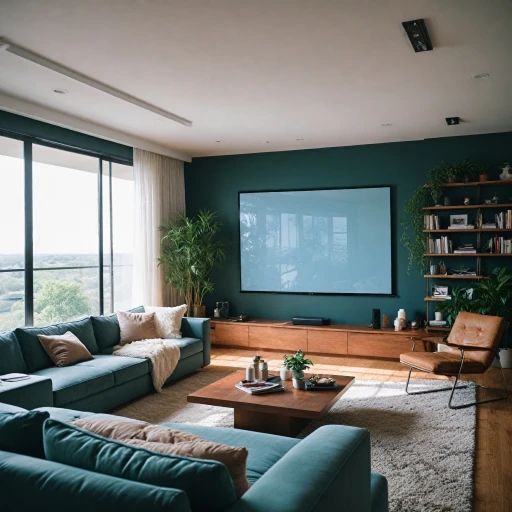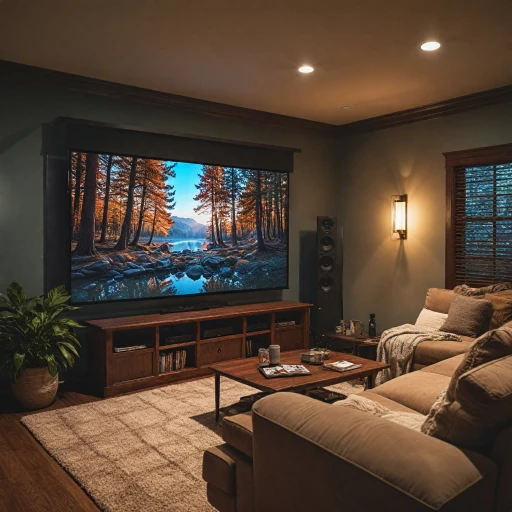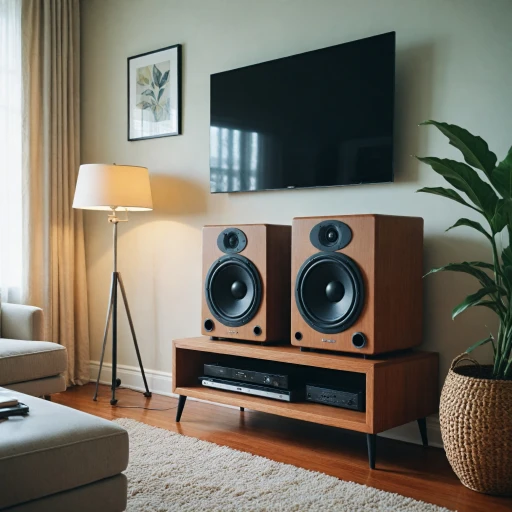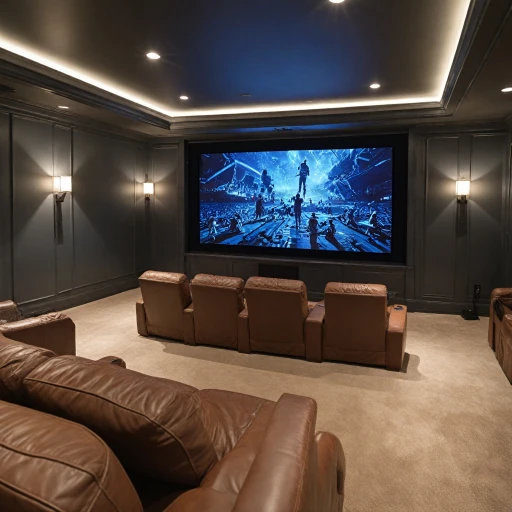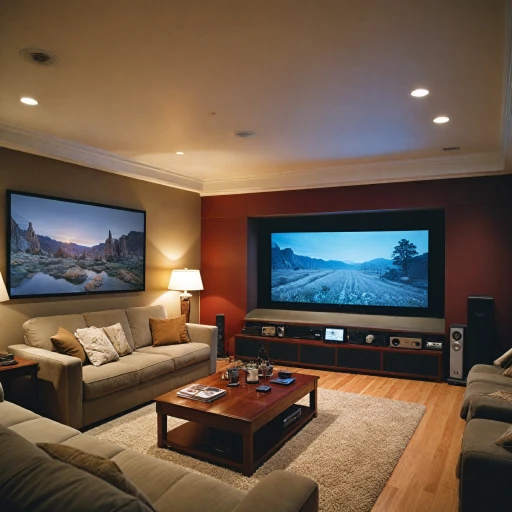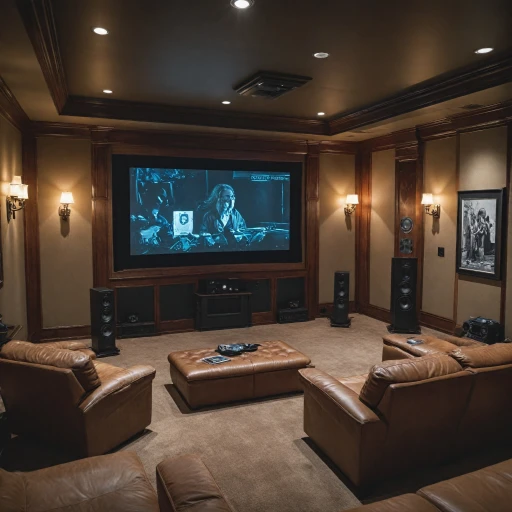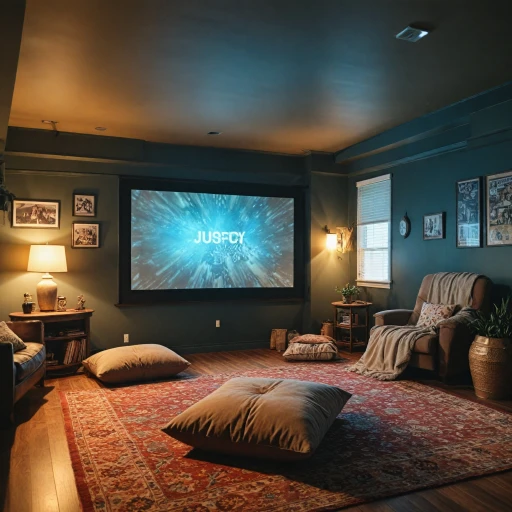
Understanding the Basics of Movie Screen Material
Grasping the Essentials of Screen Material Basics
When diving into the world of home theater screens, understanding the fundamentals of screen material is paramount. The screen is not just a white surface; it's a crucial component that significantly impacts the overall image quality projected in your home theater. The right screen material can make a marked difference in contrast, color accuracy, and viewing experience.
One key aspect to consider is the gain of the screen material, which determines how light is dispersed and reflected toward the audience. High-gain projection screens are designed to direct more light towards the viewer, enhancing brightness, which is crucial in rooms with ambient light. However, they might impact the viewing angle, so it's vital to balance gain with your preferable viewing angle.
Different types of screens—be it fixed frame, DIY, rear or front projection—require specific screen materials to achieve best picture quality. For instance, a matte white screen is widely appreciated for delivering consistent image quality across various environments. However, in setups involving short throw projectors, a tensioned screen material that prevents wrinkles is recommended to optimize image quality.
The materials vary from standard white to high-contrast black surfaces which aim to improve contrast and depth, particularly in rooms where ambient light is a challenge. These options offer diversity in achieving optimal projection results for different setups.
For anyone setting up a diy projector or considering a more permanent fixture like a fixed frame projection screen, understanding the diverse materials available will be beneficial for making an informed decision. For more detailed insights into optimizing your screen setup, explore how a fixed frame projection screen can enhance your home theater experience.
Comparing Screen Materials: Fabric, Vinyl, and More
Assessing Different Projection Screen Surfaces
Choosing the best screen material for your home theater can dramatically affect picture quality, and several options are available such as fabric, vinyl, and even some advanced materials. Let’s delve into each type to see how they might impact your viewing experience.
Fabric Screens are known for creating evenly distributed images and providing good durability. They are usually coated with a matte white surface that works well with most projectors. A fixed frame fabric screen may be suitable if you're prioritizing versatility and cost-effectiveness in your setup.
Vinyl Screens offer options for both front and rear projection, and often they feature coatings that increase their gain. High gain screens can enhance brightness, but sometimes at the expense of the viewing angle. This makes them ideal for rooms with more limited seating arrangements.
For many, the choice might come down to balancing light and image quality. Fixed materials like a wall-mounted projector screen can help improve picture quality by enhancing the clarity and contrast.
DIY Projector Screens may save money upfront, but the quality of materials like paint or fabric affects the ultimate projection quality. Consider that some DIY initiatives might not achieve the same reflective properties as commercial offerings like high contrast screens.
It's important to remember that each of these choices interacts with ambient light. Some materials have better light rejecting properties which maintain vibrant image quality even in less than ideal lighting conditions. Selecting a screen that complements your projector, whether short throw or ultra short, will provide a more immersive theater experience.
Impact of Ambient Light on Screen Material Choice
The Role of Ambient Lighting in Screen Material Selection
Choosing the right screen material for your home theater involves evaluating various factors, with ambient light being a pivotal consideration. Each material interacts with lighting conditions differently, and understanding these interactions can significantly enhance your viewing experience.
When ambient light is present, it can affect image quality and contrast on your projection screen. The choice of screen material becomes critical to achieving the best picture quality regardless of your theater environment's lighting conditions.
- Matte White Screens: These are ideal for controlled lighting environments. Matte white provides even light distribution and a wide viewing angle but performs less favorably in brightly lit rooms.
- High Gain Screens: High gain materials are engineered to increase image brightness, which improves viewing in rooms with some ambient light. The gain can enhance the image, yet it might narrow the optimal viewing angle.
- Grey or High Contrast Screens: Grey screens, known for their high contrast, are designed to absorb ambient light and maintain deeper black levels and richer colors. These are often preferred when ambient light is unavoidable.
It's important to assess the quality of the projector light within your own theater space. Consider whether your setup is for front projection or rear projection, and weigh how much natural light enters the room.
Ultimately, the best screen material will align with your specific room conditions. If you're unsure about the appropriate choice, consulting with experts or retailers experienced in DIY projector screen options could help ensure you maximize your projector's image quality. For those interested in further enhancing the audio aspect of their setup, exploring audio experience options can be beneficial.
Acoustic Transparency: Is It Necessary for Your Setup?
Deciding on Acoustic Transparency for Home Theater Projectors
When setting up your home theater, one factor worth considering is whether your projector screen should have acoustic transparency. This concept involves using screen materials that allow sound to pass through without distortion. But is it necessary for your setup? Acoustic transparent screens are useful if you plan to place speakers directly behind the screen, keeping the sound perfectly aligned with the projected image. Here's what you need to weigh:- Sound Quality: The main advantage of these screens is their ability to deliver clear audio without interrupting the sound path. Materials like woven fabric excel here, offering an effective solution for maintaining sound quality.
- Screen Material Options: Choices vary from perforated vinyl to specially woven textile materials. These are designed to maintain the integrity of sound waves while providing a crisp, white projection surface for enhanced picture quality.
- Considerations for Fixed Frame Screens: Acoustic transparency can be a concern if you're opting for a fixed frame screen setup. Ensure that the frame is sturdy enough to hold the material taut, reducing any potential for sound distortion.
- Impact on Image Quality: While these screens are beneficial for audio, consider the viewing experience. Sometimes, acoustic materials may slightly reduce image quality due to their texture. Factors such as gain, contrast, and viewing angle may shift based on the material used.
- DIY Acoustic Screens: There's also the option to create a DIY projector screen, piecing together high-quality acoustic materials. This route can be cost-effective, but it requires careful selection to ensure you don't compromise on image or sound quality.
DIY vs. Commercial Screen Materials: Making the Right Choice
Weighing the Pros and Cons of DIY vs. Commercial Solutions
Choosing between a DIY projector screen and a commercial option can significantly impact your home theater experience. Each pathway has its unique benefits and challenges, aligning differently with individual preferences, resources, and expectations. Going the DIY route, you might initially be attracted by the lower cost and the rewarding sense of accomplishment. It gives you the freedom to design a screen fitting exactly the surface and viewing area you need, accommodating any required screen size. DIY screens often utilize materials like matte white cloth or special projection surfaces that you can personally source and tailor. This approach also allows for flexibility in experimenting with various gain and color settings until finding what offers the best picture quality in your specific theater environment. However, DIY projection screens may not always rival the quality of commercial screens. Commercial options often come pre-tested and guarantee a certain level of consistency, especially in crucial areas such as light diffusion and image quality. They are designed by experts to optimize high contrast and screen materials, sometimes integrating advanced features like short throw or ultra-short projection capabilities. Additionally, commercial screens often boast features like fixed frame designs that hold the material taut, resulting in superior screen surface flatness. Some models even include ambient light rejecting technology that enhances viewing in less-than-ideal lighting conditions. These factors can lead to better image quality, offering a more immersive theater experience with consistently high contrast. It's also worth considering the aspect of maintenance and longevity. Commercial projector screens tend to be more durable and come with manufacturer warranties, which can be a significant advantage in maintaining quality over time. In conclusion, your choice between DIY and commercial screen solutions will depend on your skill level, budget, and expectations from your home theater. Weighing the costs, effort, and benefits will guide you toward the best decision for your viewing needs.Maintenance and Longevity of Screen Materials
Taking Care of Your Home Theater Screen for Lasting Performance
When you've invested in a home theater projector and the corresponding screen, understanding the maintenance and longevity aspects can significantly impact the image quality and viewing experience. Here are some key points to consider:
- Regular Cleaning: Dust and dirt can accumulate on the surface, affecting the projection's clarity. Use a gentle, microfiber cloth to regularly clean your screen material, whether it's fabric, vinyl, or another type. Avoid harsh chemicals, which can damage delicate surfaces, especially matte white screens known for their optimal viewing angles.
- Protecting the Surface: Keep the area around your fixed frame and screen free from potential scratches or damage. High-contrast and ambient-light-rejecting materials require careful handling to sustain their quality over time.
- Inspecting the Frame: Ensure the frame of your screen is robust and intact, as a secure frame upholds the tension and flatness needed for a uniform image. This is especially important for large screen sizes and DIY projector solutions.
- Maintaining Acoustic Transparency: If your screen material allows for sound to pass through, regularly check that the acoustic efficiency isn't compromised. The quality of sound is equally important as the picture quality in achieving a theater-like experience.
- Consider Environment Factors: Be mindful of light exposure, humidity levels, and other environmental considerations that might degrade screen materials over time. A controlled environment maximizes lifespan and consistency in image quality.
- Reassessing Over Time: As technology evolves, so do screen materials and projection capabilities. Regularly reassess whether your current setup, including your short throw or ultra-short throw projector, continues to meet your expectations. High-end materials, like a Silver Ticket screen, may offer enhanced image quality through improved contrast and gain factors.
By following these maintenance tips, your home theater projection screens will deliver superior viewing experiences for years to come. Choosing and caring for the best screen material ensures that movie nights remain immersive and enjoyable.
